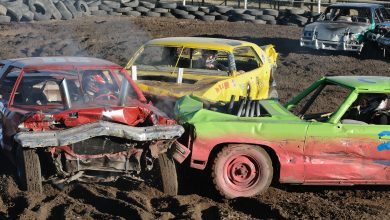A Brief History of the American Driver’s License

Recently my daughter decided to delay getting her driving license. While it came as a surprise to me, it turns out that she may be part of a growing trend among young people in the United States of not rushing into getting a license. While many reasons to put off licensing have been suggested, such as the recession and changes in communication technology, so far there are no definitive answers. It isn’t even widely agreed that this is the beginning of a long term change, as opposed to a temporary blip in the history of licensing. Not too surprisingly, given the size and regional diversity of the United States, this trend varies by a number of factors, such as geographic region and family income. Clearly there is a cost to benefit calculation that must happen between how necessary a license is in an area, the expense of driving, and the increasing licensing hurdles that are thrown up in an attempt to make driving safer. All of these issues are food for thought, but I’d like to start off here with a simple history of the driver’s license in the United States.
In the U.S. driver’s licenses are issued by individual states and territories, as opposed to the federal government. This means that while there are some broad trends in the developments of licenses there is also a fair amount of variability in licensing history and requirements. (Links to the sources used for the history section are at the end of the post.)
New York was the first state to register automobiles in 1901. Licenses to operate vehicles came later. New York started issuing badges to chauffeurs in 1903. In that same year Massachusetts and Missouri became the first states to require all drivers, not just professionals, to have a license. Other states followed suit gradually. For example, New York state began issuing paper licenses with personal data and photographs in 1910, however there was no state-wide legal requirement for a driver’s license until 1924. The last state to require a license to drive was South Dakota in 1954.

It seems sensible to many people now that licensing and safety concerns went hand in hand. There’s some suggestion, though, that early safety legislation was aimed more at when and how vehicles could be used, rather than training drivers, themselves. For example, some counties in California passed ordinances requiring “motor wagons” to pull off the road when horse drawn vehicles approached, and prohibiting the use of motor vehicles at night. People were taught to drive by automobile salesmen and organizations like the YMCA, as well as by family and friends. Perhaps most telling, laws requiring people to pass an examination in order to drive often lagged well behind laws requiring a license. While Missouri was one of the first two states to require a license to drive in 1903, the state didn’t make people pass a driving exam until 1952. The earliest state mandated driving exam was in Rhode Island in 1908. The last state to require applicants to pass an exam? South Dakota in 1959.
In 1909 Pennsylvania was the first state to put an age restriction on driver’s licenses. It was an absolute minimum of 18 years of age. The first state to implement an early version of a graduated licensing system, in which younger teenagers could drive with certain restrictions, was Connecticut in 1921. 16 year olds were allowed to drive as long as they were accompanied by a licensed driver. New York State created a learner’s permit in 1925. It was good for three months and allowed the bearer to take instruction under the guidance of a licensed driver. Graduated driver licensing, or GDL, has become the norm in all 50 U.S. states and the District of Columbia, but minimum entry ages range from 14 to 16 and the length of the probationary period, amount of supervised driving required and restrictions vary drastically. The number of restrictions placed on provisional drivers and the requirements that must be fulfilled before applying for a full license began to increase dramatically in most states beginning in the 1990s.

Looking at this overview there are a few striking points. One is that the safety component of licensing drivers was not the principle concern until rather recently. The driver’s license has been largely a form of identification in the United States since its inception. One of the most obvious illustrations of this is the number of anti-counterfeiting devices incorporated into licenses beginning in the mid-1980s. The issue was not that people were creating fake licenses in order to drive. Rather young people were using modified or counterfeit licenses to enter bars or purchase alcohol after the drinking age was raised to 21. The driver’s license (not, say, passports or some other card) was accepted as the primary form of identification. There has also been a socio-economic aspect to driving from the beginning. Cars cost money to obtain, run and maintain. It’s worth considering the link between driving, household finances and the role of the license as a primary form of identification, especially in light of the recent demands for voter identification laws from some sectors.

Another interesting observation is how very recent the driver’s license is. Many Generation Xers viewed getting their first license as an almost immutable American rite of passage. In most states, however, the driver’s license test has been around for less than a century and has been morphing continuously. The stringency of graduated driver licensing requirements has increased dramatically over the last couple of decades. While this may be a good thing for safety, it puts extra financial and time burdens on the families of young drivers. The increase in GDL requirements comes at the same time that funding for public schools in many regions is dropping and driver’s education programs are being shifted to private companies. Not surprisingly, we see a difference in which teens put off getting a license by family income. A study by AAA showed that in families with an annual income of $60,000 or more, 60% of teens got their licenses within the first year they were eligible. Only 16% of teens from families making $20,000 or less got their licenses in that first year.
I can’t say that I’m entirely sorry that my own teen has decided to put off driving. After all, it’s risky business. At the same time, we’re fortunate that she can choose not to drive. We live in a place where she can get everywhere she needs to be by biking or taking public transit. This isn’t true for everyone, however, and the intersection between need for a car and the hurdles to getting a license does not fall equally on all young people.
links to sources:
Smithsonian: America on the Move
Evolution of the New York Driver’s License
Federal Highway Administration
Teen Drivers requirements info
other interesting sources for history
featured image “69 chevy ad by: e r j k p r u n c z y k
1903 District of Columbia driver’s license from the National Museum of American History
1938 Ohio driver’s license from the National Museum of American History
1963 chevy impala by Insomnia Cured Here twm1340





Something that’s happened in recent years, at least here in California, is that the early licensing restrictions and requirements have been greatly increased. Fees have gone up, but now for instance a teen with a license can’t drive with friends in the car without also having a licensed adult over the age of 25 in the car. The more stringent restrictions have been passed in the name of younger driver safety.
When I went to get licensed 20 years ago I applied for a learners permit after I was 15 and a half. I took a drivers ed class offered by my school and then a behind the wheel class that my parents paid a couple hundred dollars for. I then had to log in a set number of behind the wheel hours with a licensed adult over 25 in the car. Once I turned 16 my dad signed off on a slip of paper that said I’d driven the required number of hours and I took my behind the wheel test at the DMV. I was issued to license where the only restriction was the red stripe that listed the year I’d turn 21. I had my own car by the time I was 17 and regularly drove all over hell and back.
In contrast 15 years later when my younger sister E went for her drivers license our mother ended up paying over $700 in various fees and there were limits on when E could drive, who she could have in the car with her, and how far she could be from the home residence listed on her ID. She got pulled over and ticketed for driving after dark when she was returning home from a study group she was being compelled to attend at the school that ran late. It was barely after sundown. When I talked to her about it she sighed and said she wished she’d just waited the two years till she was 18; when the only requirement to take a driving test and get a license was showing proof that she’d attended a behind the wheel driving school. It ended up being a $300 ticket.
I wonder how much of that growing trend is related to state governments making it increasingly difficult for people between the ages of 16 and 18 to get a drivers license without feeling as though they are being penalized for being young.
That being said I have a friend who put off getting her license until she was in her early 20’s and I think she missed a critical window for learning a new skill – she’s flat out one of the twitchiest drivers I know with an unsettling tendency to speed when she shouldn’t.
It makes sense that the driver’s license and its innovations would be relatively recent, but I’d never put that much thought into it. This was really interesting!
I think that people with very good intentions have lobbied heavily to get tougher GDL requirements, and insomuch as it might make people safer that’s great. But it also seems like the people advising on the guidelines have a vision of upper middle class or higher families who have the money for driving programs and the time off work to supervise kids driving. The GDL requirements are unlikely to be helpful if they mean that people can’t fulfill them and just put off learning to drive that much longer. I read that in the 1970s 95% of students had access to driver’s ed at school. I couldn’t find a hard number for driver’s ed programs now, but I know that there are none in our high school or the surrounding towns. There’s the danger that driving becomes the privilege of those with money, while those without are penalized. (WRT your friend I got my learner’s permit at 15 and a day, full license at 16 and a week and am a terrible driver 😉
Wow, I didn’t know all that about the history! In high school, I did a report on the factors that go into driver safety for teens, and what I found was surprising to me at the time, but really makes sense. Studies show that what matters more than first age of driving is length of experience driving. In other words, 5 years of experience will equal 5 years of experience, no matter if you started at 16 or at 21. The longer you wait to learn, the older you’ll be before you become a good driver. If schools gave increased access to affordable driving lessons, we probably would all be a bit safer.